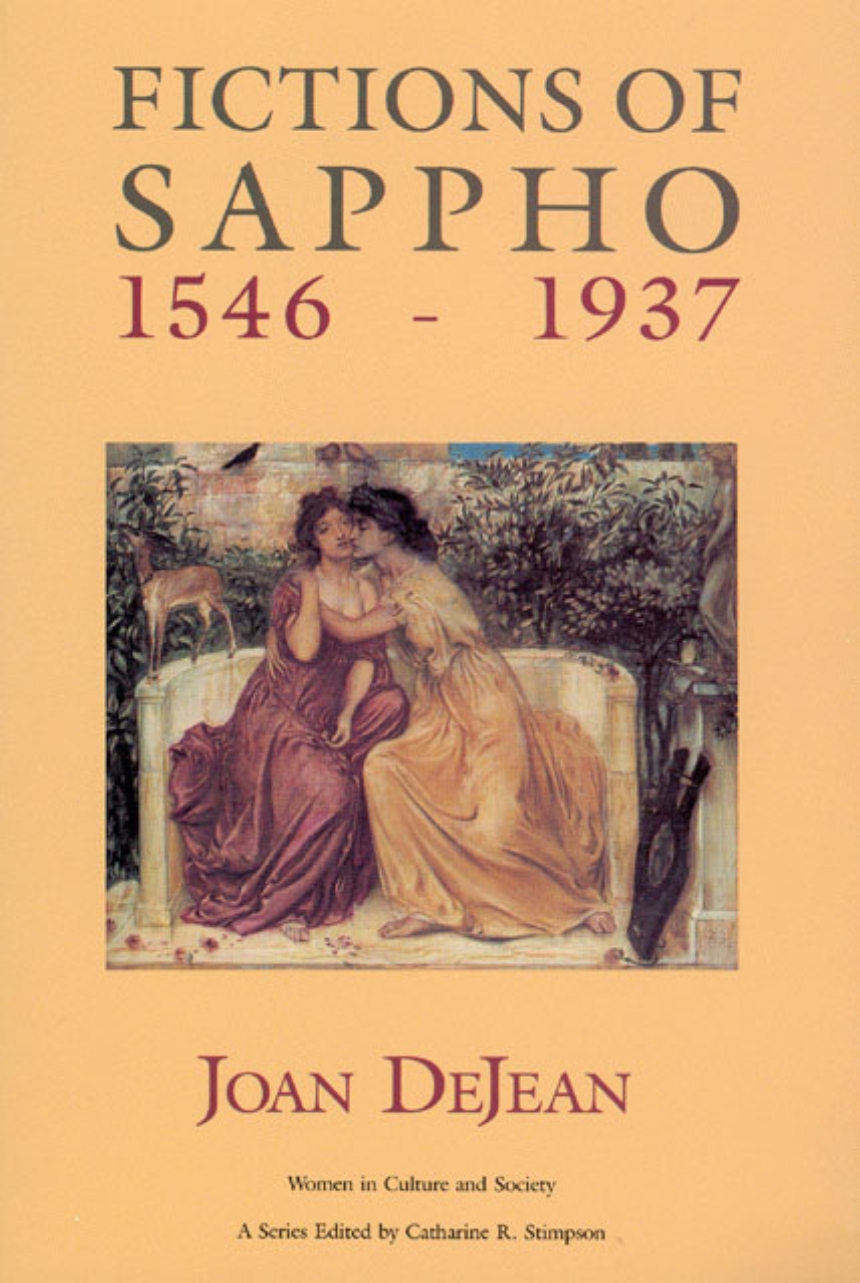Fictions of Sappho, 1546-1937
Considering Sappho as a creature of translation and interpretation, a figment whose features have changed with social mores and aesthetics, Joan DeJean constructs a fascinating history of the sexual politics of literary reception. The association of Sappho with female homosexuality has made her a particularly compelling and yet problematic subject of literary speculation; and in the responses of different cultures to the challenge the poet presents, DeJean finds evidence of the standards imposed on female sexuality through the ages. She focuses largely though not exclusively on the French tradition, where the Sapphic presence is especially pervasive. Tracing re-creations of Sappho through translation and fiction from the mid-sixteenth century to the period just prior to World War II, DeJean shows how these renderings reflect the fantasies and anxieties of each writer as well as the mentalité of his or her day.
402 pages | 9 halftones, 2 line drawings | 6 x 9 | © 1989
Literature and Literary Criticism: Classical Languages, Romance Languages
Table of Contents
List of Illustrations
Series Editor’s Foreword
Acknowledgments
Introduction
Saphon, Sappho, Sapho, Sappho, Sapphô, Psappha
Preliminaries: The Sapphic Renaissance (1546-1573)
1. Female Desire and the Foundation of the Novelistic Order (1612-1694)
Sappho Lost and Found
The Birth of "Sapho"
"The Secretary of Ill-fated Heroines"
"Ovid’s Disciples"
Sapho and/in the "Great French Classics"
Recovering a Mother Tongue (1): The Other Epistolary Heroinism
Recovering a Mother Tongue (2): The New Heroic Novel
Ritual Murder
2. Sappho’s Family Romances (1697-1818)
The Promiscuous Mother
Sappho au naturel
Fugitive Erotics
Fugitive Sappho: Sappho as émigrée
Sapho in (Napoleonic) Italy
Restoration to the Patriarchy
3. Sappho Revocata (1816-1937)
Sex and Philology
De Rerum Natura
The Pure and the Impure
"The Pagan School"
Epilogue
Chronology of Sappho’s Presence in France
Appendix: Sappho, Fragments 1 and 31: Translations and Presentation
Notes
References
Index
Series Editor’s Foreword
Acknowledgments
Introduction
Saphon, Sappho, Sapho, Sappho, Sapphô, Psappha
Preliminaries: The Sapphic Renaissance (1546-1573)
1. Female Desire and the Foundation of the Novelistic Order (1612-1694)
Sappho Lost and Found
The Birth of "Sapho"
"The Secretary of Ill-fated Heroines"
"Ovid’s Disciples"
Sapho and/in the "Great French Classics"
Recovering a Mother Tongue (1): The Other Epistolary Heroinism
Recovering a Mother Tongue (2): The New Heroic Novel
Ritual Murder
2. Sappho’s Family Romances (1697-1818)
The Promiscuous Mother
Sappho au naturel
Fugitive Erotics
Fugitive Sappho: Sappho as émigrée
Sapho in (Napoleonic) Italy
Restoration to the Patriarchy
3. Sappho Revocata (1816-1937)
Sex and Philology
De Rerum Natura
The Pure and the Impure
"The Pagan School"
Epilogue
Chronology of Sappho’s Presence in France
Appendix: Sappho, Fragments 1 and 31: Translations and Presentation
Notes
References
Index
